 |
Bedrock: Therapeutic Communications for EMS |
1.00 |
The topic of therapeutic communications relates to nearly every EMS response and is especially important for high-acuity situations. Elizabeth C. Shannon, EMT, MS, RN, PMHNP-BC, brings her years of experience as a mental health care provider and an EMT to the table in this insightful discussion. As you hear her navigate the questions posed, we hope that you will confirm what you are already doing well. We also hope that your reflection on the subject will lead to improved EMS responses for you and the other medics on your crew.
Final Exam: Please read each question carefully. You will have two attempts to gain a 75% or higher on this exam. If you are not successful in two attempts, you are welcome to take the course again to gain the certification. |
 |
Beginning a New Career |
0.50 |
In this course, you’ll learn some tips to determine what career is right for you, what to consider before changing careers, how to evaluate yourself as you consider a career, and more. |
 |
Beginning Graphic Design |
0.75 |
This course covers all of the key components of graphic design, from typography and color to branding and visual identity. |
 |
Behavior Intervention Plans for Paraprofessionals |
1.00 |
This course covers information necessary to understand and implement effective behavior intervention plans (also called positive behavior support plans) as part of an Individualized Education Plan (IEP). To adequately support a student, a BIP helps the school and team document a child's behavior and present the data when making suggestions or recommendations. |
 |
Behavior Intervention Plans for Teachers |
1.00 |
This course covers information necessary to understand and implement effective behavior intervention plans (also called positive behavior support plans) as part of an Individualized Education Plan (IEP). A BIP is created after extensive documentation to provide monitored replacement behaviors for a child exhibiting behaviors that interfere with learning. |
 |
Behavior Management for Paraprofessionals |
1.50 |
In an education setting, behavior management involves teaching and reinforcing positive behaviors while trying to reduce negative ones. This course covers how a paraprofessional can assist with behavior management in the classroom.
This is just one out of many paraprofessional courses we offer. This course will help you expand your knowledge about student behavior and will help you understand what your role as a paraprofessional is. |
 |
Behavior Management for Teachers |
1.50 |
In an educational setting, behavior management involves teaching and reinforcing positive behaviors while reducing negative ones. This course covers how to incorporate behavior management in the classroom.
This is just one of many educational courses we offer. This course will help you expand your knowledge about student behavior and will help you implement behavior management techniques. |
 |
Benefits of Connecting Seniors and Children (CDA 3) |
2.00 |
This course equips you with the knowledge and tools to integrate senior adults into childcare and education programs. Discover how this approach benefits children, seniors, your program, and you, enriching lives across generations. |
 |
Best Practices in Red Panda Management |
1.00 |
In this webinar attendees will learn about best practice husbandry techniques for red panda. The San Diego Zoo has had red pandas since the 1940’s. Nicki Boyd has worked with red panda for 20 years and has put together information on breeding, housing, nutrition, veterinary care, exhibit design, training, and enrichment. The webinar also contains some of the latest information on conservation of red panda in the wild. This webinar will go over the basic best practices from experts in red panda care and shows the San Diego Zoo’s red panda management of this |
 |
Beyond Email |
1.00 |
In the past, email was the best way to communicate with people online. But today, there are many different ways to talk online.
Online communication allows you to do things like:
Make phone calls from your computer and even see the person you are talking with
Share with lots of friends at the same time without sending an email to each of them
Engage with different websites by making comments or posting your own content
We'll take a look at some different methods of online communication, including chat, video calling, text messages, and status updates. |
 |
Beyond Pride: Year-Round Action |
1.00 |
Every June, Pride Month offers a chance for celebration and equal rights activism for the LGBTQ+ community and their allies. But what happens when the rainbow-themed window displays and social media filters are put away? How do we remain authentic supporters of LGBTQ+ rights and honor the community for the rest of the year? This course will help.
This is the second in a two-part series. The first course (Power and Pride: The Origins of Pride Month) reviews the origins and history behind Pride Month. This second course contains practical advice for organizations and individuals who want to live out inclusive values and remain committed to advocacy year-round. |
 |
Bioinspiration: A Novel Activity to Engage Students in Creativity and STEM |
1.00 |
Bioinspiration, also known as biomimicry, is an interdisciplinary process in which biological principles and elements are studied in order to draw analogies to be applied to human innovation. We will first define bioinspiration through examples of past successes. Next, we will discuss why conservation organizations like San Diego Zoo Global are interested in this field and how conservation may benefit from the involvement of engineers and industry. Participants will enjoy an adaptation tour of some of San Diego Zoo Global’s diverse plant and animal collections, highlighting examples of how the natural world can inspire engineering. His talk will include an interactive exercise to help stimulate creative thinking based around bioinspiration. |
 |
Biomimicry/Bioinspiration: a novel activity to further conservation involving engineers, business, and San Diego Zoo Global |
1.00 |
Bioinspiration, also known as biomimicry, is an interdisciplinary process in which biological principles and elements are studied in order to draw analogies to be applied to human innovation. Learn how we introduce students to the concept of bioinspiration through a variety of education programs. We will also describe our approach when working with students to foster creativity and think in new and innovative ways. |
 |
Birds |
2.00 |
This course will provide an introduction to birds, including an overview of physical characteristics, habitat, behavior, reproduction and the conservation efforts dedicated to protecting this taxonomic group. |
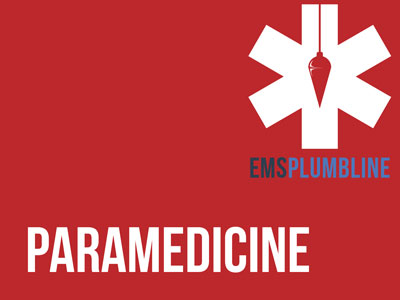 |
Bleeding - Paramedic Overview |
2.00 |
Clinical Pharmacologist, Nicole Acquisto, spends time in the classroom with four experienced paramedics. In this session she reviews the ALS management of the Bleeding Cascade and briefly reviews Thromboelastography. |
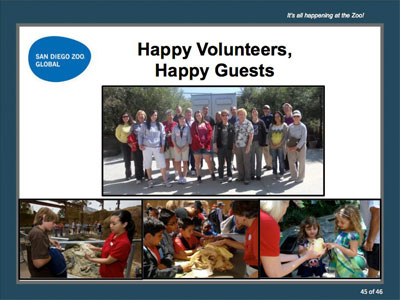 |
Blended Learning |
1.00 |
How do you effectively take a tired old lecture series or outdated formalized training and turn it into a vibrant and engaging program perfect for your learner audiences? For most organizations, blended learning is a MUST. Follow our journey from investigation to implementation of training for a variety of volunteer assignments. Explore a multitude of techniques to teach a broad range of learners effectively and efficiently. Join us as we share tips and techniques on implementing blended learning. |
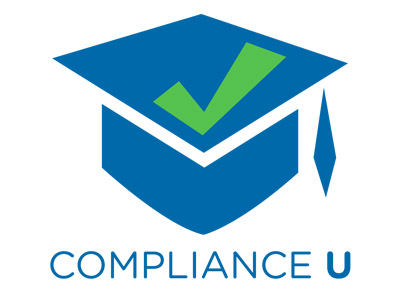 |
Bloodborne Pathogens and HIV (Corrections) |
1.00 |
In this course, you will learn about the characteristics of bloodborne pathogens, diseases caused by these pathogens, such as HIV, and how they are transmitted. You will also learn the elements of an exposure control plan and how to prevent contact with or infection from contaminated body fluids. In addition, you will learn how to handle exposure incidents involving blood, and the signs, labels, and color-coding used to warn of biohazards and bloodborne pathogens. This training is provided to help employers provide a safe and healthful work environment for their employees and minimize the possibility of employee exposure to bloodborne pathogens. |
 |
Bloodborne Pathogens and HIV (Human) |
1.00 |
In this course, you will learn about the characteristics of bloodborne pathogens, diseases caused by these pathogens, such as HIV, and how they are transmitted. You will also learn the elements of an exposure control plan and how to prevent contact with or infection from contaminated body fluids. In addition, you will learn how to handle exposure incidents involving blood, and the signs, labels, and color-coding used to warn of biohazards and bloodborne pathogens. This training is provided to help employers provide a safe and healthful work environment for their employees and minimize the possibility of employee exposure to bloodborne pathogens.
This course is labeled with (Human) to indicate that it is not animal-related.
|
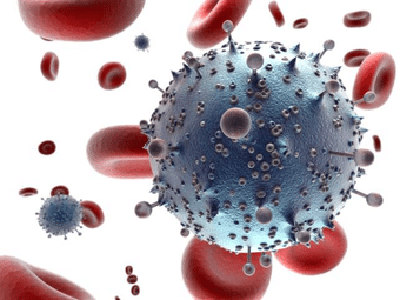 |
Bloodborne Pathogens and HIV (Short) |
0.33 |
This course will help you define Bloodborne Pathogens (BBP), identify common types, identify how BBP are transmitted and contracted, determine reasonable anticipation for encountering BBP, define an Exposure Control Plan, and define PPE, its effectiveness, and decontamination when BBP are encountered. |
 |
Bony Fishes Collection |
10.00 |
Whether they are cruising the vast open sea, blending in with the bottom, lurking in the kelp beds, hiding in the coral, or fighting their way upstream, fish live in a world that’s vastly different than ours. In the Bony Fishes Collection, we’ll dive into this world. You’ll explore:
• Bony Fishes Module 1: Physical Characteristics
• Bony Fishes Module 2: Distribution and Habitat
• Bony Fishes Module 3: Ecology and Behavior
• Bony Fishes Module 4: Reproduction and Development
• Bony Fishes Module 5: Conservation.
|
 |
Brain Development in Infants and Toddlers (CDA 8) |
2.00 |
Brain development has changed over the last 20 years. Early brain development focused mainly on the intellectual aspects of the brain, but over the last 10 years, more focus has been placed on the social emotional exchanges in infancy and how that affects brain development. Early experiences predispose how children see the world. This course is designed to be part of a Child Development Associate (CDA) Credential™ curriculum and covers CDA Subject Area 8, Understanding Principles of Child Development and Learning. This course can also be taken as a stand-alone learning event or as part of a broader early childhood education curriculum. |
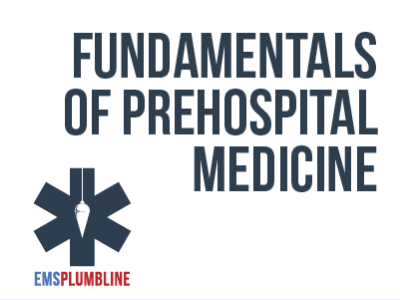 |
Brick by Brick: Assessing the Elderly—Female Cardiac Patient |
1.00 |
We know that there are unique challenges when assessing elderly patients. BLS providers also encounter unique challenges when assessing females for potential cardiac problems. This lesson briefly reviews the BLS assessment skills that are required for both populations. The introduction of 12-lead ECG acquisition gives the BLS provider a chance to orient themselves to the skills necessary when working in a system that requires recording and/or transmission of such tracings. The multiple choice exam is designed to test your knowledge of the material you just reviewed. You have two attempts to gain an 75% or higher on this exam. Please take your time and answer each question carefully. |
 |
Brick by Brick: Difficult Deliveries |
1.00 |
Assisting a mother with a complicated childbirth is one of the most challenging situations an EMS provider may encounter in their career. Our team of experts discuss the prehospital management of postpartum hemorrhage, prolapsed cord, shoulder dystocia, and breech birth. Doctors Kristen E. Burhans, Maia Dorsett, and Kara Louise LaBarge demonstrate skills that you will want to practice with your response team before your next obstetrical emergency occurs. |
 |
Brick by Brick: Edibles and Legalization-Part 1 |
1.00 |
In the Fall of 2021, EMT Conner Griffin sat down with Monroe Livingston County's Medical Director, Jeremy Cushman, and Dr. Nicholas Nacca. Dr. Nacca brings a unique set of skills to the first lesson in this series. His experience as an Emergency Medicine Physician and a Toxicologist is evident. They discuss the medical aspects of potent edibles and how legalization offers new challenges to prehospital medicine. You will want to listen to this lesson and return for more as this topic evolves.
Final Exam: This multiple choice exam is designed to test your knowledge of the material you just reviewed. You have two attempts to gain a 70% or higher on this exam. Please take your time and answer each question carefully. |
 |
Brick by Brick: Gastroenterology Overview—Part 1 |
1.50 |
In most EMS systems, gastroenterology education is avoided at the BLS level. However, prehospital providers frequently respond to reports of nausea, abdominal discomfort, or pain. There is often a disparity in the relationship between the frequency of responses and the amount of education available to EMS providers.
Melodie Kolmetz, Paramedic, PA-C, is a multi-disciplinary provider and educator. She brings her experience as a paramedic, physician assistant, and university professor to this prerequisite course. Her review of the anatomy and physiology of the gastrointestinal and genitourinary tracts offers a better understanding of how to identify life-threatening emergencies. The end result will be better choices when determining the appropriate prehospital interventions and the nearest appropriate transport destination.
Final Exam: Please read each question carefully. You will have two attempts to gain a 70% or higher on this exam. If you are not successful in two attempts, you are welcome to take the course again to gain the certification. |


























